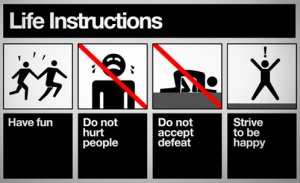Q: What are the benefits to an isometric hold?
A: "Isometric exercise or isometrics are a type of strength training in which the joint angle and muscle length do not change during contraction (compared to concentric or eccentric contractions, called dynamic/isotonic movements). Isometrics are done in static positions, rather than being dynamic through a range of motion." (Wikipedia Updated February 2012)
Let's review a few isometric positions before breaking down the science further. These are a few very common isometric positions people practice;
1. Plank
2. Air squat or Wall sit
3. Handstand
4. Standing
I'm going to stop and have you think you a second about number 4. You most likely haven't thought about standing as exercise or fighting to maintain a position. More than anything else, your body needs to be strong to hold certain positions, move about, and return to hold a position.
The workout below is me attempting work on the parallettes for the first time. I'll add in that I'm 4 months post-op carpal tunnel release surgery at this time.
The point of this series is to see if you can move, hold, and move again. My planche isn't great, but this was only my first attempt.
My entire workout was this L-hold to planche 15 times and roughly 20mins jumping rope after. Give it a shot!
The video below was taken a few months back at Equinox - Chelsea. A few of these gyms have parallettes on the floor, so ask a trainer if you can't find them yourself.
This is a breakdown of what you should look like at each stage of this movement.


No comments:
Post a Comment